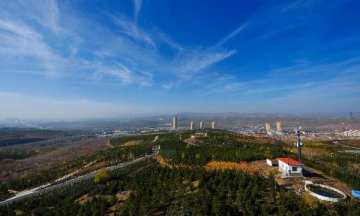
China's 13th Five-Year Plan, the proposal for the country's development over the next five years, will bring new opportunities for domestic economic growth, overseas experts have said.
The Communist Party of China (CPC) on Tuesday issued proposals for China's development from 2016 to 2020, setting a target of "maintaining medium-high growth."
President Xi Jinping explained that an annual growth of 6.5 percent would be required for China to "build a moderately prosperous society" by 2020.
"This ushers in an era of a managed market economy, where the modern Chinese economy is prepared and completely ready for the approach to the second centenary target of 2049," said Stephen Perry, chairman of the 48 Group Club committed to promoting China-Britain links, in a recent article.
China aims to double its 2010 GDP and the 2010 per capita income of both urban and rural residents by 2020, according to Xi's statement.
"The growth pattern is truly changing from an investment, export-led economy to a domestic consumption, services-driven one, leading to slower albeit healthier growth," said Livio Ribeiro, an economist at the Getulio Vargas Foundation in Brazil, in an interview with Xinhua.
The consumption shift "comes along with deeper urbanization" and increasing demand for "soft commodities and cleaner energy sources," Ribeiro said.
"China will most likely buy much more food and services by the end of this decade. Understanding that is vital to play along with the growth transition and to reap all the opportunities it will create," he said.
The proposal sets guidelines and targets for future development, highlighting innovation, coordination, green development, opening-up and sharing. The government plans a better allocation of resources including labor, capital, land, technology and management.
Besides "huge opportunities" in the financial sector, Joseph Foudy, clinical associate professor of economics at New York University, also expects the healthcare, automobile and electronics sectors to thrive under the next five-year plan.
"The auto sector is in slowdown in China, but I expect it to kick back and return in the next couple of years to be very vibrant," he told Xinhua.
Companies targeting middle-class Chinese families will also occupy the mass market of consumer goods, Foudy said. With the proposed guidelines and targets, China will continue to encourage mass entrepreneurship through major scientific and technological projects, and by building a number of national laboratories, in the hope that it will lead to new technology.
In addition, China will steer traditional manufacturing along an environmentally friendly path, establish a low-carbon production system and encourage businesses to upgrade technology, the document said.
"In China's case, the growth success over the last 30 or 40 years has been a combination of real innovation and technology," Foudy said.
"In the long run, almost all of the growth really has to come from smarter processes in companies and better technology." Ribeiro pointed out the importance of transitioning from "assembled in China" to "designed in China," which is "closely related to the economic transition itself, boosting the service sector, the production of high-end commodities, research and development" and "leading to higher productivity in China."
Though "previous imbalances such as housing, debt and financial markets" still exist, Ribeiro said that "the Chinese government understands most of the challenges it faces and has significant political room to work out the economic reform."
"It will be a bumpy ride, as every comprehensive reform is, but it is completely feasible," he said. "The process of rebalancing could actually be painful," Foudy said. But with new opportunities, "it is a short-term pain to make the country healthier and more vibrant in the future."





















Latest comments